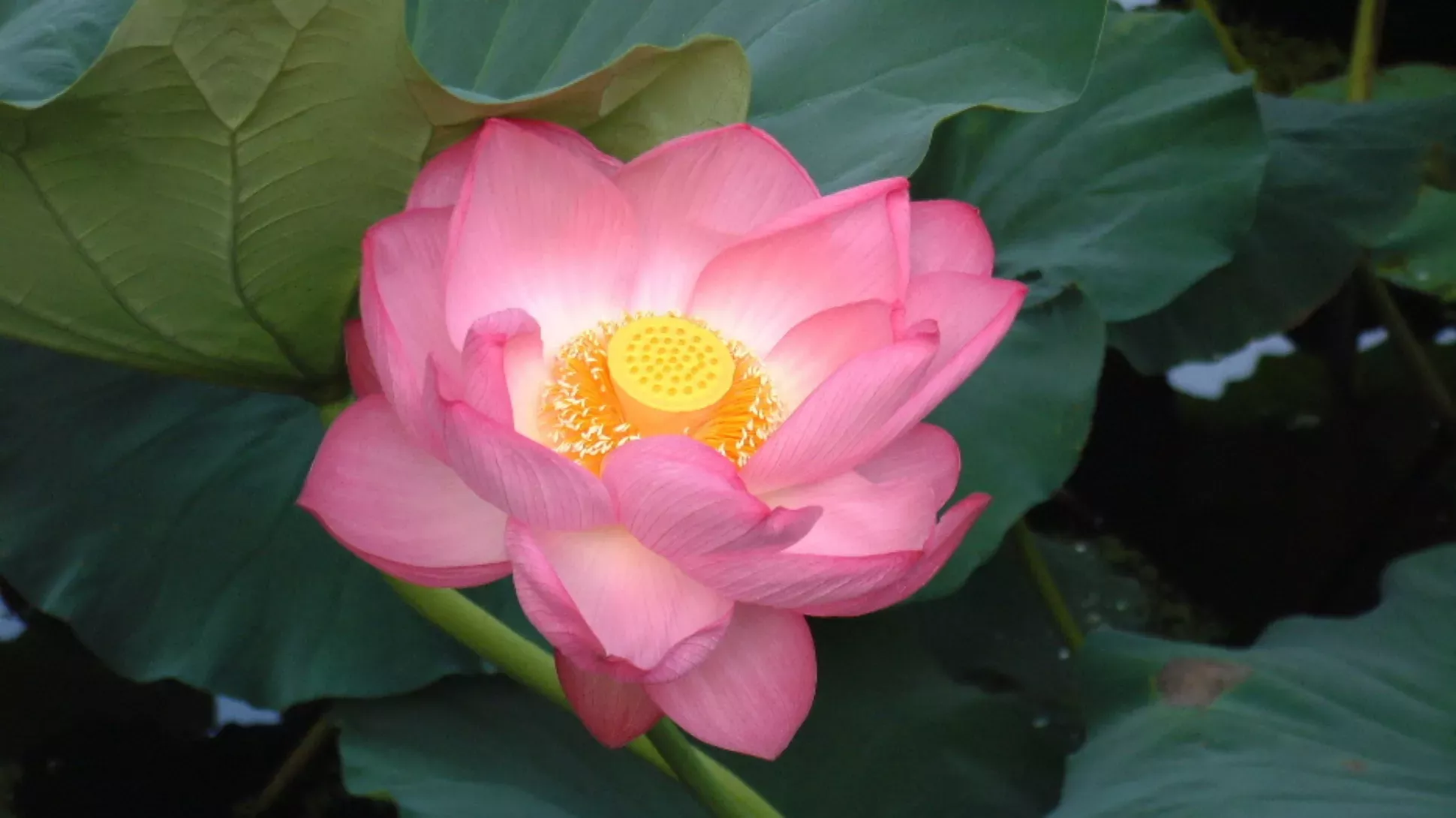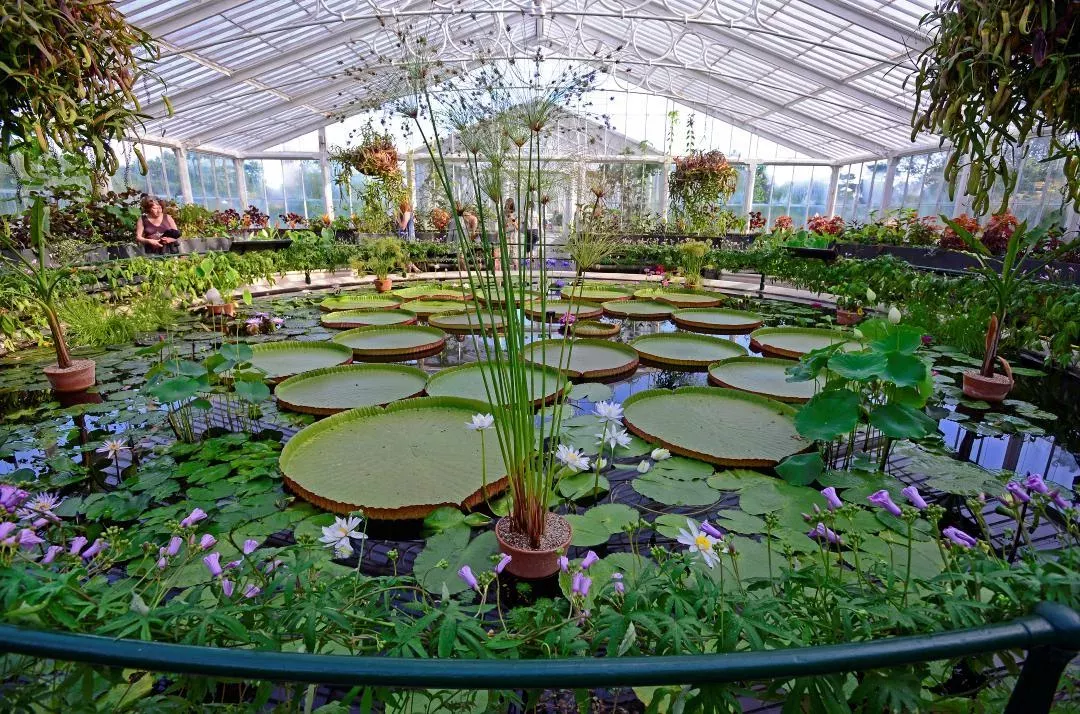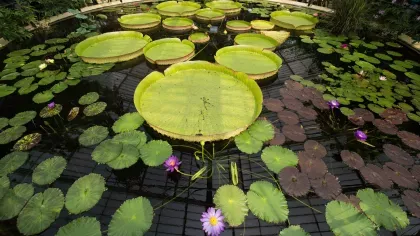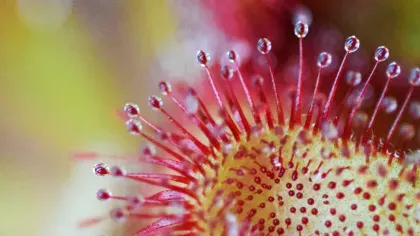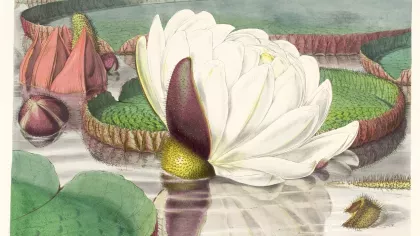20 March 2020
Dive into aquatic life
Explore our collection of aquatic plants from record-breaking waterlilies to snorkelling trees.

Underwater predators
Behind the scenes in our Tropical Nursery, there are carnivorous plants lurking in the waters.
Bladderworts (Utricularia) use tiny bladder-like traps to gobble up passing prey.
They are found in open water and wet soil in nutrient-poor habitats across the world, from wetlands in the UK to tropical rainforests in Brazil.
When prey such as water fleas brush against highly sensitive trigger hairs, a trapdoor opens.
The bladderwort sucks water and the unsuspecting prey into the trap and snaps the door shut.
It then digests the prey using enzymes and absorbs its nutrients.
The suction trap can fire hundreds of times and only takes 0.02 seconds; about the average time it takes for a human to blink.


Snorkelling trees
When walking along the banks of our lakes and ponds, or looking at the mangroves in our Princess of Wales Conservatory, you may notice roots projecting up into the air.
These are called pneumatophores and are a sort of snorkel for trees.
In waterlogged, oxygen-deficient soil habitats, trees and shrubs have these special root systems that help supply oxygen to the main submerged root.

Record-breaking waterlilies
Our giant Amazon waterlilies (Victoria amazonica) are impossible to miss in our Princess of Wales Conservatory.
They have huge floating lily pads that are up to 3m in diameter and strong enough to support the weight of a child.
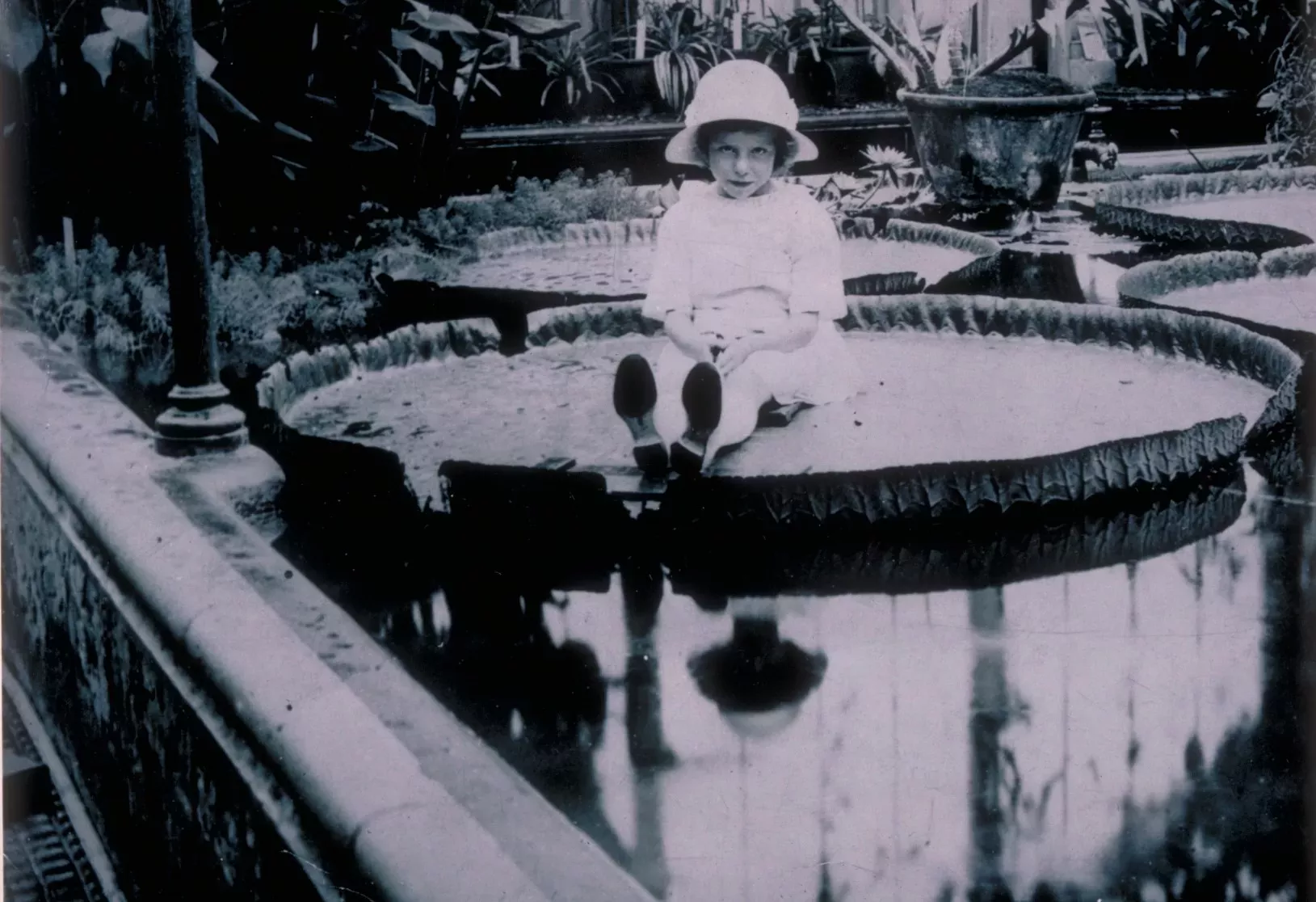
We also house the smallest waterlily in the world, Nymphaea thermarum, which has leaves as small as 1cm in diameter.
This waterlily grew in just one location in damp mud around freshwater hot springs in southwest Rwanda.
It is now extinct in the wild however due to over-exploitation of the hot spring that fed into the waterlily’s fragile habitat.
Kew horticulturalists have the expertise to successfully propagate and cultivate this plant of which over 50 can be found in our living collection, including in the Waterlily House.
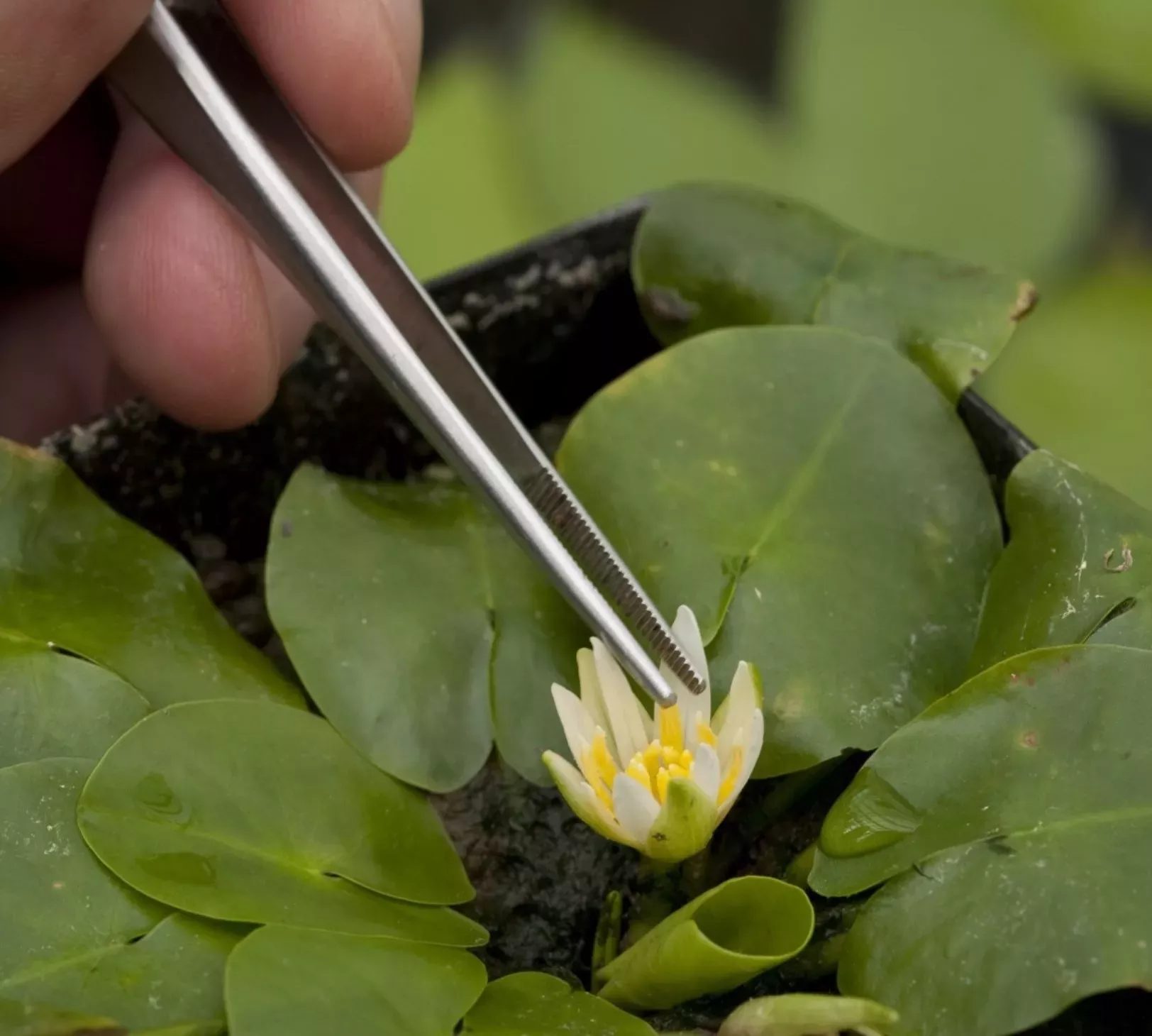

Sacred flowers
Another natural wonder to look out for in the Waterlily House is the sacred lotus, Nelumbo nucifera.
The sacred lotus has large showy flowers and has been celebrated for thousands of years as a symbol of beauty, purity and divinity in Hinduism and Buddhism.
Seeds of a sacred lotus from China are one of the oldest on record to germinate. They were thought to be over an incredible 1288 years old.
